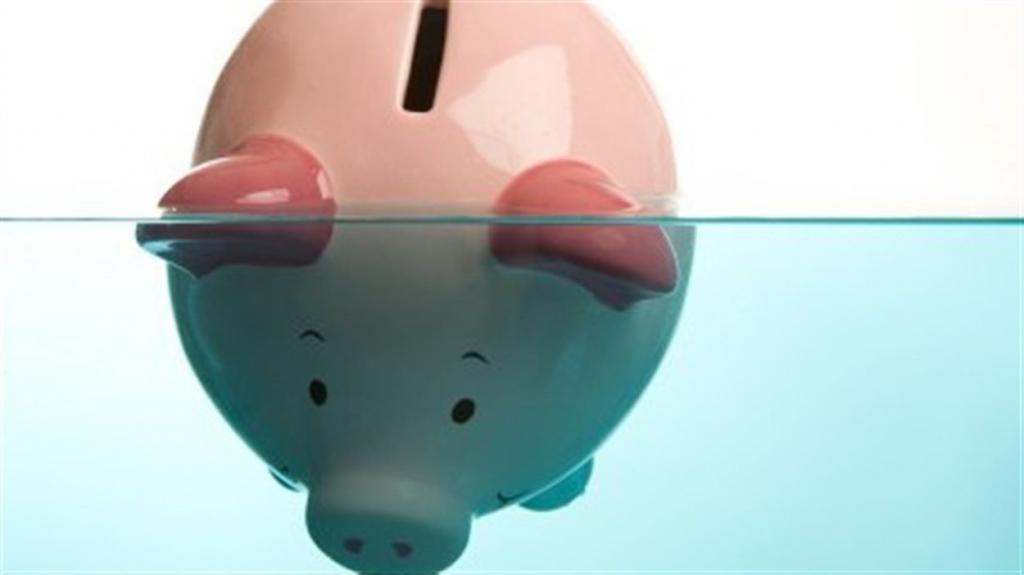In the process of interaction between legal entities, situations arise related to the emergence of debt obligations. This can be both credit and receivables. What do they mean? Let's take a closer look at their description:
- Accounts payable (bad can be recognized). That is, when the organization owes another legal or natural person a certain amount of money for the services or goods rendered.
- Receivables. It consists of a set of debts to the organization from other legal entities and individuals.
Debt classification
Similar debts also qualify as:
- Doubtful. Debt collection potential. That is, the probability of their return is quite high.
- Hopeless. These are debts that will be written off, following the rules of accounting.
According to the current rules, in order to write off debt, which from year to year remains a cargo on the balance sheet of the company, worsening its financial performance, it is necessary to recognize such a debt as bad.

Such a cancellation is possible not only between legal entities, but also in the event of an individual's debt to a legal entity. This situation can be observed in the interaction of banks with the population, namely in the field of lending. In rare cases, when the bank is not able to pay deposits of citizens, the opposite situation can be observed.
Bad debt
Debt recognition as bad is regulated by the Tax Code. The rules are aimed at the correct collection of taxes from the profits of legal entities, which should be able to not pay payments on absent income.
Debt recognition conditions
A debt can be recognized as bad if:
- The expiration of the limitation period (SID), which in general practice is three years. The reference date is the moment when the actions of the debtor indicate a refusal to fulfill obligations. However, the period may be extended due to the fact that the debtor has committed actions qualified by the creditor as recognition of the debt. That is, the LED is interrupted and a new period begins, but no more than ten years.
- Debt cannot be recovered due to liquidation or bankruptcy of the company.
- The presence of an official document from state bodies for the collection of debts (bailiffs) about the impossibility of fulfilling obligations by the debtor, with justification of the reason.
- Lack of data on the whereabouts of the debtor and its assets after the search activities.
- Lack of property that can be recovered in repayment of debt.
When there are several reasons for the recognition of bad debts to be possible, then this is done in the reporting period when the basis arose for the first time. However, the criteria for recognizing debt as hopeless in tax reporting are also applied in accounting.
Debt Accounting
To write off the debt of the debtor, you must perform the following steps:
- recognition of doubtful debts;
- the creation of a reserve, the amount of which is determined as the sum of the reserves for each individual debt;
- after the debt is recognized as bad, you can proceed to the cancellation procedure.

All of these actions are reflected in the accounting entries:
| Debit | Credit | Content |
| 91-2 | 63 | The direction of the operation is the formation of a reserve to cover bad debts |
| 63 | 62 | The write-off of receivables |
| 007 | Balance sheet |
Debt bad for collection in accounting is written off by inventory. It is carried out in accordance with a written order of the organization’s management, for which a special commission is created. Carrying out such events is the responsibility of business companies. It is the commission that determines when a debt is hopeless to be collected and written off. The procedure is as follows:
- an order is drawn up for an inventory of receivables;
- documentation is generated confirming the fact that it is impossible to recover the debt after the inventory;
- an order is written off to write off the receivables;
- write-offs are reflected in accounting entries for future reporting.
Accountant Actions

Speaking about the recognition of debt as bad for collection, accounting activities should be based on:
- the results of the inventory commission, which are reflected in the relevant documentation;
- accounting reference;
- order of the head.
In the case when the organization has not formed a reserve for debts in the previous tax period, the situation for different business entities is different:
- for commercial organizations, debt, hopeless increases the item of expenses;
- for a commercial company, debts are classified as financial results.
In any case, this is not reflected in the company in the best way. The written-off receivables, in turn, do not disappear. They are credited to the off-balance account, where five more years are taken into account if the debtor can still pay the debt. In the latter case, income is accounted for as other income of the company.

How to write off such debt? In accounting, the bad debts of a transaction are written off:
| Db score | Credit score | Content |
| 91-2 | 62 | The posting is aimed at writing off bad receivables, including debts of debtors with an expired limitation period |
| 007 | Balance of debtors debited. Separate accounting is maintained for each debt. |
It should be noted that in the balance sheet of the company the indications on the account “Provisions for doubtful debts” are not reflected. The amount of debt of partners is indicated minus pledged reserves, which also reduce the amount of retained earnings. The reflection of the deducted amounts for the reserve for debts is attributed to other expenses. The rules allow you to save the financial statements from the impact of the write-off of receivables.
It is important to know that writing off the debt of a private entrepreneur, excluded from the Unified State Register of Enterprises, is impossible. The individual entrepreneur is responsible to the creditor with all his property. This makes debt collection possible through a judicial authority.

Tax reporting
Bad debt accounting is not only for accounting. It is mandatory in tax reporting. Debts recognized as bad are written off in full. To cover such expenses, legal entities can form a reserve fund in accordance with applicable law.
It is important to know that tax accounting allows as a debt, for which it is necessary to form a reserve only:
- sale of goods;
- performance of work;
- provision of services.
Contributions to the fund when reporting to the tax authority reduce the tax base. Since they are attributed to other expenses of the company.
When the amount of bad debt is not covered by the funds of the reserve fund, they are usually transferred to the amount of non-operating expenses.
In addition, you can pay attention that bad debts can arise not only for the reasons previously indicated, namely;
- the amount of the advance transferred to the supplier on account of the forthcoming delivery of goods;
- amount of debt under a loan agreement.
Such debts cannot be covered from the reserve fund.That is, they are not subject to write-off and are taken into account only in the number of non-operating expenses. Thus, bad debt, which cannot be restructured or written off, has a direct effect on the amount of income tax.
The Tax Code of the Russian Federation takes into account bad debt with an expired statute of limitations as part of non-operating expenses on the recognition date of the latter and on the last day of the expiration of the LED, which coincides with the last day of the reporting tax period. However, the code does not clarify the rules for determining the term of the SID, referring to other civil acts, namely the Civil Code.
The timing
In general practice, the statute of limitations is three years. The peculiarity of LEDs is that it can be updated, which complies with the law. Alas, this can lead to the impossibility of writing off debt. However, its repayment will remain impossible. Nevertheless, lawmakers found a way out by introducing amendments that limited the maximum LED life to ten years.
How to reflect the difference between accruals in the balance sheet?

If we talk about the formation of the reserve, the occurrence of the difference in accounting and tax accruals will have to be reflected in the balance sheet on the corresponding accounts due to the different estimates of income and expenses:
- 91 “Other income and expenses”;
- 99 "Profit and loss."
The specified difference is taken into account when calculating corporate income taxes.
Write-off of debts. How is this reflected in the tax return?
Write-offs of bad debts are reflected not only in accounting entries, but also in the tax return:
- At position 302, the amount of debts for which collection is impossible, including those that are not covered by reserves, if any, is entered.
- Line 300 shall reflect the amount of losses, including non-realized ones.
In fact, the availability of receivables and methods of paying them off is under the scrutiny of not only accounting, but also tax. Each of these parties seeks to minimize possible losses, and moreover, timely cancellation of debts ensures the financial health of the company.
The most striking example of the presence and cancellation of receivables is the banking sector. It involves an active lending mechanism, which is a source of profit. However, it is in this area that payments most often occur that are impossible to collect.
Debtor mechanisms
The legislation very clearly defines the mechanisms of influence on the debtor in order to fulfill loan obligations. Typically, the issue can be resolved in several ways. Let's look at them:
- work of a specialized collection service with the debtor directly;
- mutual consent of all interested parties with the aim of changing the terms of the contract;
- appeal to the judiciary, at this stage a settlement is possible;
- adjudication by a court for the purpose of recovery and transfer of proceedings to the bailiff service.

It is worth saying that after exhausting all possible recovery methods, banks decide to write off the debt. However, this approach between legal entities is not entirely appropriate, namely in terms of the work of the debt collection service. The most common interaction of company lawyers in pre-trial and judicial regime.
Little conclusion
Now you know how to write off bad debts when this can be done. In any case, the correct reflection of existing debts of debtors and their timely cancellation in case of impossibility of collecting them is aimed at the financial health of the legal entity. That is, the lower the company's loss ratio, the more attractive it is to investors. In addition, timely cancellation of bad debts reduces the tax base. It turns out that this is not always bad, and in some cases also justified.
